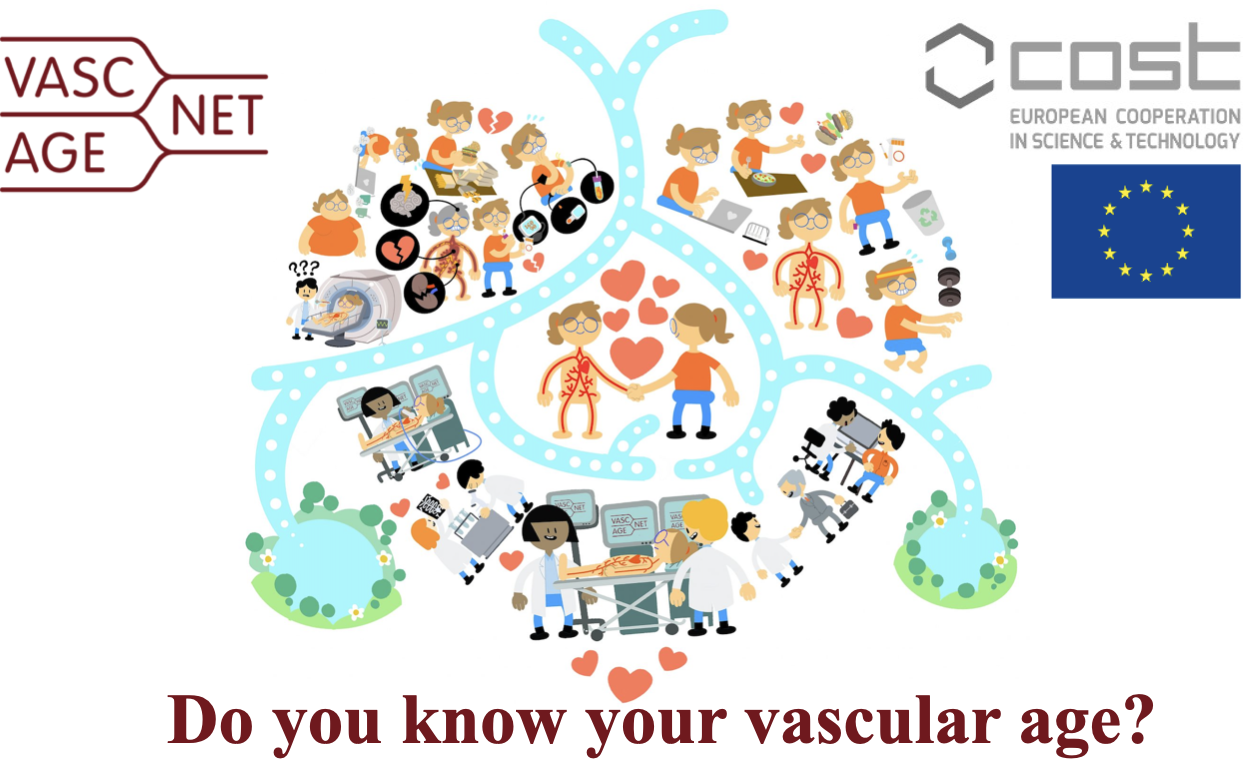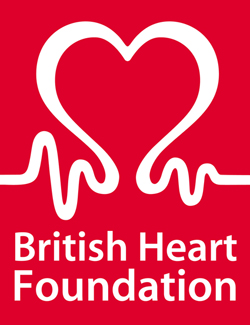Vascular Ageing
Vascular ageing (VA) is a complex biological process characterised by the progressive deterioration of blood vessel structure and function over time. It can capture the early stages of cardiovascular (CV) health decline and may occur at a different rate than chronological ageing. Vascular age serves as a more effective predictor of CV disease prognosis than chronological age. Initially, vascular deterioration typically remains asymptomatic, but it can eventually lead to damage in the heart, brain, kidneys, and other organs.
 The HaeMod Lab is a key contributor to VascAgeNet a European network established in November 2019. VascAgeNet brings together scientists, clinicians, engineers, and industry partners with the aim of refining, harmonising and promoting the use of VA biomarkers. Since the establishment of VascAgeNet in 2019, J. Alastruey has been leading Working Group 2: Physiological and Technical Background – from Bench to Bedside. The group aims to refine the understanding of the underlying pathophysiological mechanisms of VA and the mathematical models used for their assessment.
The HaeMod Lab has actively contributed to the following VascAgeNet outputs:
The HaeMod Lab is a key contributor to VascAgeNet a European network established in November 2019. VascAgeNet brings together scientists, clinicians, engineers, and industry partners with the aim of refining, harmonising and promoting the use of VA biomarkers. Since the establishment of VascAgeNet in 2019, J. Alastruey has been leading Working Group 2: Physiological and Technical Background – from Bench to Bedside. The group aims to refine the understanding of the underlying pathophysiological mechanisms of VA and the mathematical models used for their assessment.
The HaeMod Lab has actively contributed to the following VascAgeNet outputs:
 The HaeMod Lab is a key contributor to VascAgeNet a European network established in November 2019. VascAgeNet brings together scientists, clinicians, engineers, and industry partners with the aim of refining, harmonising and promoting the use of VA biomarkers. Since the establishment of VascAgeNet in 2019, J. Alastruey has been leading Working Group 2: Physiological and Technical Background – from Bench to Bedside. The group aims to refine the understanding of the underlying pathophysiological mechanisms of VA and the mathematical models used for their assessment.
The HaeMod Lab has actively contributed to the following VascAgeNet outputs:
The HaeMod Lab is a key contributor to VascAgeNet a European network established in November 2019. VascAgeNet brings together scientists, clinicians, engineers, and industry partners with the aim of refining, harmonising and promoting the use of VA biomarkers. Since the establishment of VascAgeNet in 2019, J. Alastruey has been leading Working Group 2: Physiological and Technical Background – from Bench to Bedside. The group aims to refine the understanding of the underlying pathophysiological mechanisms of VA and the mathematical models used for their assessment.
The HaeMod Lab has actively contributed to the following VascAgeNet outputs:
- A review article on VA to increase knowledge among the broader medical community and bring routine measurement of VA closer from bench to bedside (Eur J Prev Cardiol, 2023). It recommended assessing biomarkers for both atherosclerosis and arteriosclerosis components of VA to prevent CV disease, challenging the prevailing focus on atherosclerosis in clinical guidelines;
- A review article on the potential, limitations, and differences of pulse wave analysis methods and reduced-order blood flow models for VA assessment (Am J Physiol, 2023). It presents comprehensive mathematical derivations of various methods and models in a single document, for the first time, demonstrating their interrelatedness and foundation in the Navier-Stokes equations;
- An in silico assessment of 19 noninvasive haemodynamic indices of VA (Am J Physiol, 2023). Carotid-femoral PWV, CAVI, and carotid distensibility emerged as superior clinical VA indicators, displaying a robust correlation with aortic Young's modulus and resistance to noise disturbances. PPG-based indices exhibited promise for daily VA monitoring under minimised noise disturbances;
- A review article on ultrasound technologies for assessing the function, structure, and reactivity of superficial arteries in relation to VA (J Ultrasound Med, 2023);
- A review article on potential VA biomarkers measured using magnetic resonance imaging or computed tomography, covering their functional principles, required sequences, post-processing techniques, and predictive values for CV events (J Am Heart Assoc, 2023).
- A survey exploring knowledge and perception of medical device regulation in VA assessment (Expert Rev Med Devices, 2024).
- A book chapter summarising the activities of VascAgeNet, published in the second edition of Early Vascular Aging (EVA) – New Directions in Cardiovascular Protection (ISBN: 9780443155123).


